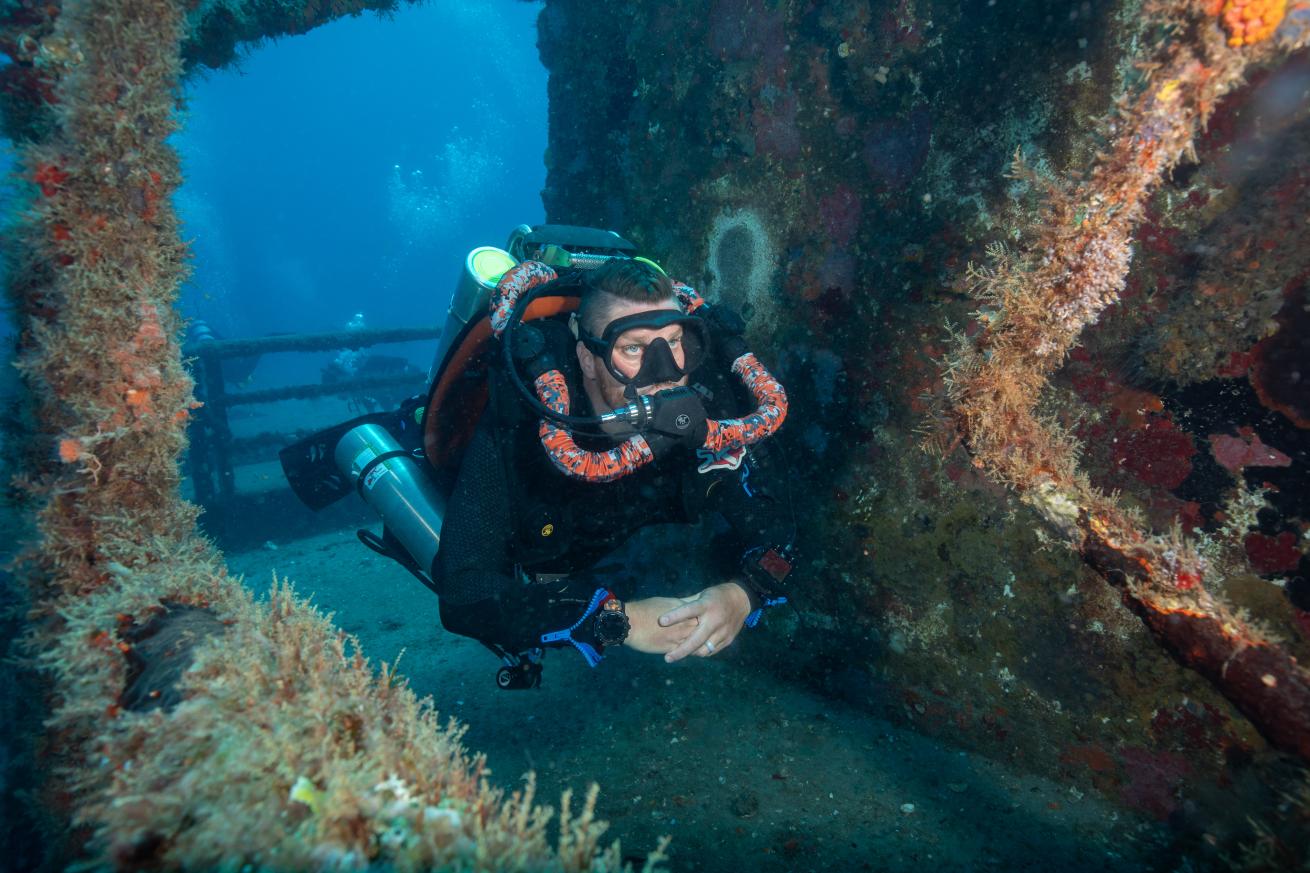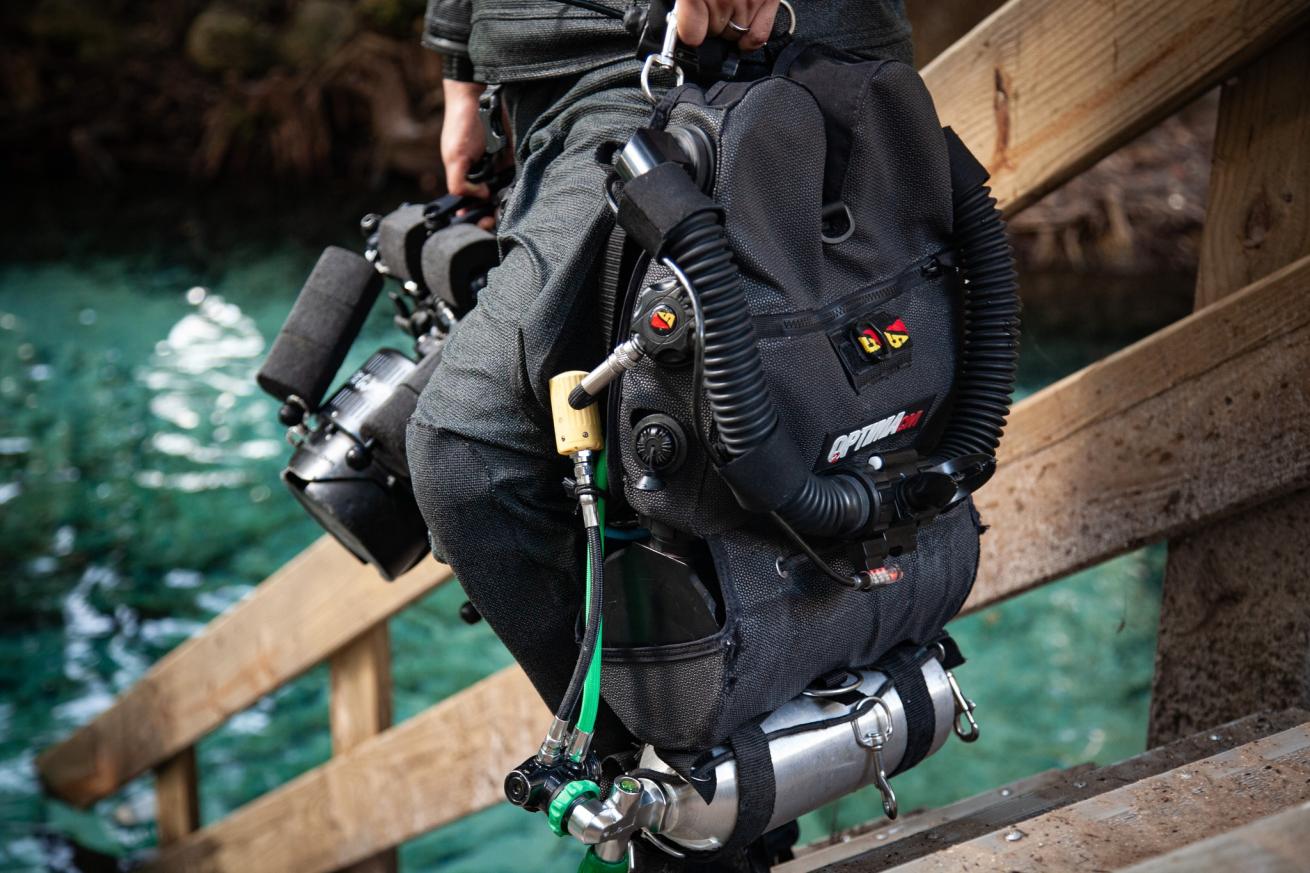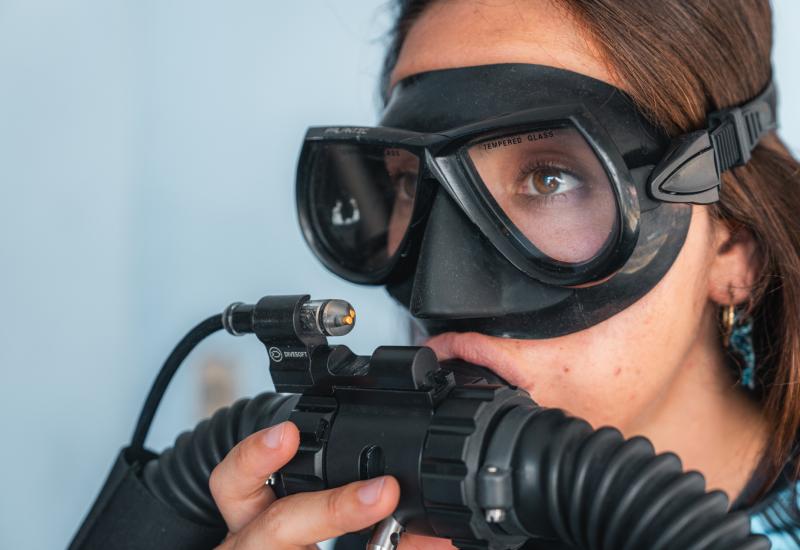How to Choose Between Rebreather Styles

Kristin PaterakisBackmount rebreathers, worn like open-circuit scuba cylinders, are easy to don and doff on a boat.
If you’re like me, looking for your first closed-circuit rebreather is super exciting. Suddenly, there is this new world of different toys to check out. While it was a bit like being a kid in a candy store, I found myself starting to stress over deciding which unit was best for me. As you look around, you’ll notice many brands making incredible rebreathers, each with unique styles and features.
Some brands even make multiple styles of their rebreather to cater to different diving types or preferences. So, in this month's edition of Exploring Rebreathers, we will have a crash course on the different styles of closed-circuit rebreathers (CCRs) available to guide your decision.
I was fortunate enough to demo quite a few units, so I’ll also include a little bit of personal experience for each style. After reading this article, I recommend booking a demo day with your local dive center, as nothing beats getting yourself in a few different systems and taking them for a test drive.
Backmount Rebreathers
Backmount-style closed-circuit rebreathers are what most scuba divers think of when we picture a CCR. They sit on our bodies very similar to how we would wear a scuba BCD and cylinder, making them feel familiar. Backmount CCRs allow for a clutter-free chest and easy donning.
Plus, since it’s worn like a regular scuba BCD, it makes getting in the water easy, whether you giant stride off a boat or walk in for a shore dive. Backmount style rebreathers typically have both their diluent and oxygen onboard. In other words, both tanks are attached to the rebreather as a unit. Many backmount rebreathers are also designed for the unit to stand independently when not in use.
Backmount systems tend to be a bit heavy, with some weighing upwards of 65 lbs (30 kg). Traveling with a backmount unit can be a bit more challenging and pricey due to the size and weight compared to sidemount or chestmount units. That said, it's not too difficult to travel with them as they usually fit right into a pelican-style case.
Depending on the brand, backmount units can offer different counterlung configurations, such as over-the-shoulder, front-mounted or back-mounted counterlungs. This allows you to pick a style of counterlungs that fits your preference. Backmount systems generally offer excellent work of breathing in many different diver positions underwater.
Some divers mention that the counterlung placement in some cases can give you a slightly shoulders-up trim when diving with a wetsuit. Backmount rebreathers are a great starting point for new rebreather divers looking for a system similar to the backmount open-circuit scuba style they are used to and aren’t as concerned with travel size.
What I liked: For open-circuit scuba, I normally dive in sidemount so demoing a backmount unit felt a bit strange to have it on my back at first. However, the work of breathing on the unit that I tried was incredible and I loved how easy it was to get on and walk right into the water.
Examples of backmount units: JJ-CCR (eCCR), Fathom MK III (mCCR)
Related Reading: Rebreathers 101

Courtesy Dive RiteChestmount rebreathers are relatively small and easy to carry.
Chestmount Rebreathers
Chestmount-style rebreathers, also sometimes called “front mount,” can trace their history back to the early days of rebreathers a century ago. Some of the first systems were a variation of chestmount; even today, many military rebreathers still utilize a chestmount style. In recent years, we’ve seen a resurgence of chestmount rebreathers in the sport diving world, and for good reasons.
Chestmount CCR units give you a wealth of flexibility in your gear configuration. You can easily swap from diving sidemount to backmount, single tank or even doubles, depending on what the dive plan calls for. Plus, since they essentially clip onto your open circuit harness, the ease of transformation allows you to jump between diving with or without the rebreather from one dive to the next.
Let’s say your first morning dive is deeper, so you clip it on to use it. But the following dive is a shallow reef where you might not want to bring it with you, so you just leave it on the boat and go open circuit. It’s that easy.
They’re also relatively small and light compared to other style units, making them great for travel. Dive Rite’s O2ptima CM weighs only 14.4 lbs (6.5 kg) and breaks down small enough that I could carry it in a regular backpack if I wanted to. The ease of travel was the most significant selling point for me since I am constantly traveling for shoots.
Chestmount systems provide great trim in the water. Their small size overall can be great for penetrating wrecks or in caves. They also position the counterlungs very close to the diver’s lung centroid, providing a low work of breathing in various diver orientations. Additionally, chestmount units can easily be removed in the water, making them perfect for small RIBs and boats. Overall, chestmount rebreathers are great for those looking for flexibility and more accessible travel.
What I liked: When I first demoed a chestmount unit I thought it would feel strange and like I had too many things on my chest. Surprisingly, I liked being able to dive in my sidemount or backmount BCD and swap the rebreather, depending on which configuration works better for the dive.
Examples of chestmount units: Dive Rite O2ptima CM (eCCR), Triton CCR (mCCR)

Courtesy Martin Strmiska, DivesoftSidemount rebreathers are popular among diving in overhead environments like caves and wrecks.
Sidemount Rebreathers
Sidemount-style rebreathers are relatively new, with the first commercially available units released in 2014. But don’t let this fool you. Sidemount systems have quickly made a massive impact on the dive world–especially in cave diving. The introduction of sidemount CCRs has allowed divers to push further in the exploration of caves in Mexico, Madagascar and Europe.
Today, there are quite a few different styles of sidemount rebreathers. Some are designed to be the same size and shape of a sidemount tank, others are built onto your open circuit sidemount harness to keep your physical profile small. They tend to be more specialized for penetration diving, such as in caves or wrecks, where having a smaller profile can be more beneficial to the diver.
Many open-circuit sidemount divers looking to move to rebreather diving will find them more familiar and comfortable instead of switching to a backmount rebreather. When I first started looking at rebreathers, this was where I initially thought I would go since I dive sidemount most of the time. But I ultimately decided to go with chestmount for the portability and being able to switch configurations. If I choose to get a secondary unit, I’ll likely go with sidemount since it feels most natural for me.
Sidemount systems tend to be lighter and smaller than backmount units while offering better streamlining. This can also make them more accessible for travel, albeit not as lightweight or compact as a chestmount rebreather. Sidemount rebreathers come in various counterlung positions, such as on the side of your chest as part of the rebreather unit or back-mounted counterlungs under your sidemount wing.
The different options can provide varying benefits in terms of work of breathing. All in all, sidemount rebreathers are great for those already experienced with open-circuit sidemount diving and looking to switch to closed-circuit or for those who will be using the rebreather more for cave and penetration diving.
What I liked: I demoed two different sidemount-style units and as an avid sidemount diver I really enjoyed them both. The comfort in the water and trim felt the best out of any of the units I tried, but that’s probably because it’s the configuration I usually dive for open-circuit.
Examples of sidemount units: Divesoft Liberty Sidemount (eCCR), KISS Sidewinder (mCCR)
Related Reading: My Introduction to Diving a Rebreather
Final Thoughts
The great thing is there isn’t a best option. Instead, there are multiple options that can fit your personal preferences. At the end of the day, the style of rebreather you choose should feel comfortable and help you accomplish your goals for learning CCR in the first place. This could be specific to a diving type, such as utilizing the small profile of sidemount rebreathers for cave diving. Or for a particular functionality, such as using a chestmount unit that has a wide range of adaptability to different gear configurations.
Another thing to consider is who you will be diving with. Do your local shops support that unit you’d like to use? Diving with others that have the same unit also gives you a great resource to draw on if you have a question or when a random o-ring breaks the same day you happened to forget your save a dive kit at home.
Rebreathers are a significant investment, so take the time to set up a demo day with an experienced instructor before investing in your first rebreather. This will allow you to check out a few different rebreathers, while learning about them and getting to test drive units in a controlled environment with an instructor. At the end of the day, your choice needs to fit your specific needs and personal preferences so go with what works best for you.

Cecilia Mar RuizJay Clue
Exploring Rebreathers is a monthly column following Jay’s journey into the world of CCR diving, sharing the best tips and info he has learned along the way. Jay Clue is an accomplished photographer, educator, and conservationist. He’s an experienced technical diver and instructor with more than 6,000 dives in all types of environments, from the cold waters of the North Sea to the beautiful caves of Mexico and exploring the open oceans in search of epic encounters with marine megafauna. His passion for marine conservation led him to the world of photography and storytelling in hopes of bringing the beauty of our planet's waterways to more people around the globe. Follow him at @jayclue on Facebook and Instagram, where he’s always happy to answer your questions and chat about diving.








